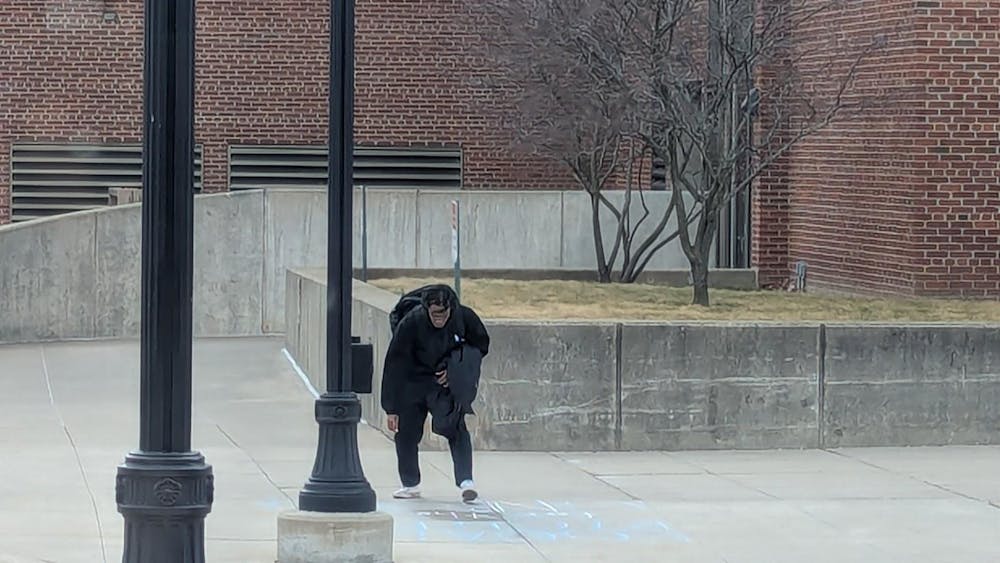A piece of history contiguous with Ypsilanti will be preserved for future generations because a remnant of the industrialized war effort from the World War II-era has been saved from destruction.
After raising more than $5 million, the Yankee Air Museum will relocate into the old Willow Run bomber plant and the move is scheduled to take place in the summer of 2017. Although the fundraising has fully saved a large portion of the bomber plant, the overall goal has not been met.
“The money raised so far purchased the real estate and will enclose and make the building fundamentally ready to accept artifacts,” YAM public relations board member Dave Callanan said. “We need to raise an estimated $10 million more to develop designs, build and implement the fixtures of a modern museum.”
The largest contributors were the people of the State of Michigan through a $1.5 million appropriation which was sponsored by State Sen. Patrick Colbeck.
During the height of WWII, one B-24 “Liberator” heavy bomber was fully assembled at Willow Run every 59 minutes and 8,654 heavy bombers were produced at the plant by Ford during the war. Today there are only two flyable B-24s from the war, although computer recreated “Liberators” were featured in the recent film “Unbroken” directed by Angelina Jolie.
“There’s something about the big, old lumbering B-24 that I found reassuring,” George McGovern said in the book “The Wild Blue” by Stephen E. Ambrose. McGovern flew a B-24 named Dakota’s Queen during WWII and was awarded the Distinguished Flying Cross for “high degree of courage and piloting skill.” He and many others mentioned pilots seemed to need “superhuman” strength to fly the plane. “I’ve seen pilots at the end of the mission that were so exhausted they literally had to be lifted out of the pilot’s seat by their crew. They couldn’t get up.”
The Willow Run wartime manufacturing plant employed 42,000 workers and more than a third of the labor force were women. The iconic image of “Rosie the Riveter” originated at the Willow Run bomber factory and the wartime manufacturing effort was seen as a pivotal moment for women’s entrance into the American workforce.
Steven Ramold has been teaching history at Eastern Michigan University since 2005 and won the Collins Distinguished Faculty Award for teaching last year. He said U.S. manufacturing of equipment and weapons was very influential to the war’s outcome.
“The industrialized war effort allowed the Allies to win while minimizing Allied casualties,” he said. “While the Axis powers tended to emphasize manpower in combat, the Allies tended to emphasize machines and firepower.” Civilians often had their lives and surroundings change as well during this time in history, Ramold said.
“War production changed the home front considerably, especially Ypsilanti after the arrival of Willow Run,” Ramold said. “War industries caused major shifts in population as rural residents moved to urban areas to work, it caused major regional shifts in population and it caused major redistribution of the population by race as well.” He said these moves did not always have a positive social impact.
“Mass population movement exacerbated wartime shortages of housing, medical care, transportation and public services,” Ramold said. “The evolving racial mix of populations also triggered a number of race riots around the country during the war.”
The YAM offers paid rides to the public on four historic airplanes including a B-17G Flying Fortress heavy bomber and a B-25 Mitchell medium bomber. The flight hangar will be conveniently close to the new museum’s location, which will make paid tours more easily accessible, Callanan said. He also mentioned other perks.
“The biggest advantage of the new location is the fact this is where the history was made,” Callanan said. “This community, the greater Ypsilanti Township area, is where the tens of thousands of people came each day to work, literally waging the war on the home front to produce the tools for liberty.”
The title of the museum will also be revamped with the new move. When the YAM relocates, the name will become the National Museum of Aviation and Technology at Historic Willow Run.








